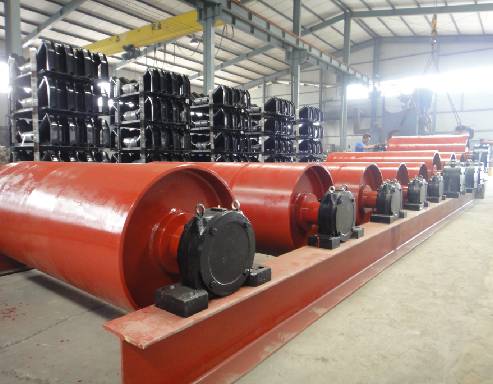 Afrikaans
Afrikaans  Albanian
Albanian  Amharic
Amharic  Arabic
Arabic  Armenian
Armenian  Azerbaijani
Azerbaijani  Basque
Basque  Belarusian
Belarusian  Bengali
Bengali  Bosnian
Bosnian  Bulgarian
Bulgarian  Catalan
Catalan  Cebuano
Cebuano  Corsican
Corsican  Croatian
Croatian  Czech
Czech  Danish
Danish  Dutch
Dutch  English
English  Esperanto
Esperanto  Estonian
Estonian  Finnish
Finnish  French
French  Frisian
Frisian  Galician
Galician  Georgian
Georgian  German
German  Greek
Greek  Gujarati
Gujarati  Haitian Creole
Haitian Creole  hausa
hausa  hawaiian
hawaiian  Hebrew
Hebrew  Hindi
Hindi  Miao
Miao  Hungarian
Hungarian  Icelandic
Icelandic  igbo
igbo  Indonesian
Indonesian  irish
irish  Italian
Italian  Japanese
Japanese  Javanese
Javanese  Kannada
Kannada  kazakh
kazakh  Khmer
Khmer  Rwandese
Rwandese  Korean
Korean  Kurdish
Kurdish  Kyrgyz
Kyrgyz  Lao
Lao  Latin
Latin  Latvian
Latvian  Lithuanian
Lithuanian  Luxembourgish
Luxembourgish  Macedonian
Macedonian  Malgashi
Malgashi  Malay
Malay  Malayalam
Malayalam  Maltese
Maltese  Maori
Maori  Marathi
Marathi  Mongolian
Mongolian  Myanmar
Myanmar  Nepali
Nepali  Norwegian
Norwegian  Norwegian
Norwegian  Occitan
Occitan  Pashto
Pashto  Persian
Persian  Polish
Polish  Portuguese
Portuguese  Punjabi
Punjabi  Romanian
Romanian  Russian
Russian  Samoan
Samoan  Scottish Gaelic
Scottish Gaelic  Serbian
Serbian  Sesotho
Sesotho  Shona
Shona  Sindhi
Sindhi  Sinhala
Sinhala  Slovak
Slovak  Slovenian
Slovenian  Somali
Somali  Spanish
Spanish  Sundanese
Sundanese  Swahili
Swahili  Swedish
Swedish  Tagalog
Tagalog  Tajik
Tajik  Tamil
Tamil  Tatar
Tatar  Telugu
Telugu  Thai
Thai  Turkish
Turkish  Turkmen
Turkmen  Ukrainian
Ukrainian  Urdu
Urdu  Uighur
Uighur  Uzbek
Uzbek  Vietnamese
Vietnamese  Welsh
Welsh  Bantu
Bantu  Yiddish
Yiddish  Yoruba
Yoruba  Zulu
Zulu Understanding the Functionality of Drive Shaft Pulleys in Automotive Engineering
Understanding the Drive Shaft Pulley Function, Importance, and Maintenance
The drive shaft pulley is a crucial component in many mechanical systems, particularly in vehicles and industrial machinery. It plays a vital role in the transmission of power and motion, enabling efficient operation of the engine and other systems. In this article, we will explore the function, importance, and maintenance tips for the drive shaft pulley.
At its core, the drive shaft pulley is a circular device that connects to the drive shaft and transmits power from the engine to various components of a machine. In vehicles, the drive shaft pulley is responsible for linking the crankshaft to the drivetrain, which includes the transmission and axles. This connection allows the vehicle to convert the engine’s rotational energy into motion, propelling it forward.
One of the primary functions of the drive shaft pulley is to facilitate smooth power transfer
. It achieves this by harnessing belts or chains that wrap around the pulley. As the engine runs, it rotates the pulley, which in turn drives the belts or chains to turn other pulleys connected to different components, such as the alternator, power steering pump, and air conditioning compressor. This interconnected system ensures that all components work harmoniously, contributing to the overall efficiency of the machine.drive shaft pulley

The importance of the drive shaft pulley cannot be overstated. A malfunctioning pulley can lead to a variety of issues, including decreased engine performance, increased fuel consumption, and even complete engine failure. For instance, if the pulley becomes worn or damaged, it may slip or misalign, resulting in a loss of power transfer and potential breakdowns of other connected components. Regular maintenance and timely replacement of worn parts are essential to ensure the longevity and efficiency of the entire system.
Maintaining a drive shaft pulley involves several key practices. First, regular inspections should be conducted to identify any signs of wear or damage. Look for cracks, fraying, or excessive rust, which can indicate that the pulley may need replacement. Additionally, keeping the belts or chains properly tensioned is vital. Loose belts can slip, reducing the efficiency of power transfer, while overly tight belts can strain both the pulley and the connected components.
Lubrication is another crucial aspect of maintenance. Ensure that any bearings or moving parts associated with the pulley are adequately lubricated to reduce friction and wear. This can help extend the life of the pulley and prevent overheating during operation.
In conclusion, the drive shaft pulley plays an integral role in the power transmission of engines and machinery. Its function is pivotal for maintaining the efficiency and performance of various systems. By understanding its importance and implementing routine maintenance practices, operators and vehicle owners can ensure that their drive shaft pulleys function optimally, thereby enhancing the overall reliability and performance of their machines. Regular checks and timely interventions can save time, money, and potential headaches in the long run.
-
Revolutionizing Conveyor Reliability with Advanced Rubber Lagging PulleysNewsJul.22,2025
-
Powering Precision and Durability with Expert Manufacturers of Conveyor ComponentsNewsJul.22,2025
-
Optimizing Conveyor Systems with Advanced Conveyor AccessoriesNewsJul.22,2025
-
Maximize Conveyor Efficiency with Quality Conveyor Idler PulleysNewsJul.22,2025
-
Future-Proof Your Conveyor System with High-Performance Polyurethane RollerNewsJul.22,2025
-
Driving Efficiency Forward with Quality Idlers and RollersNewsJul.22,2025





























